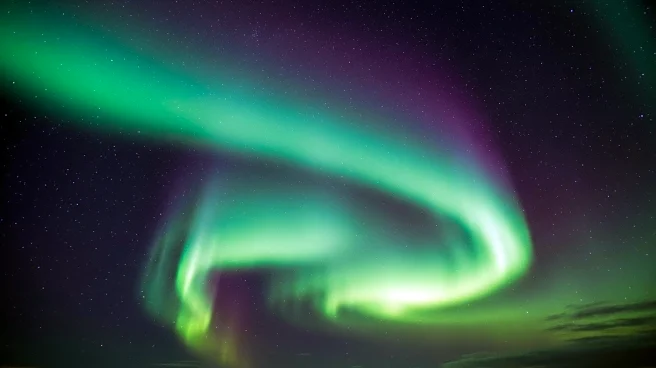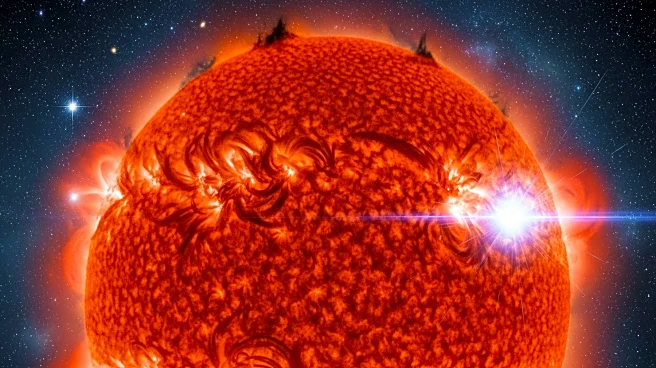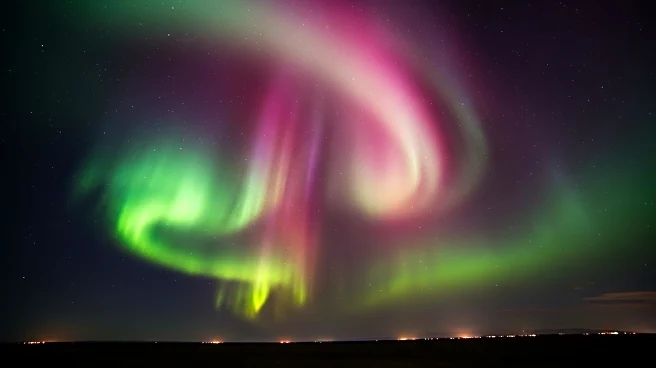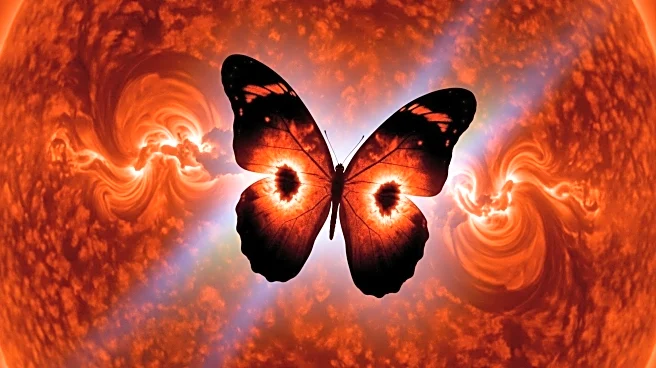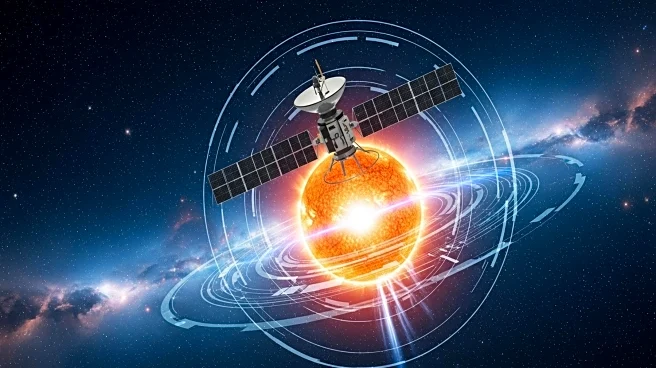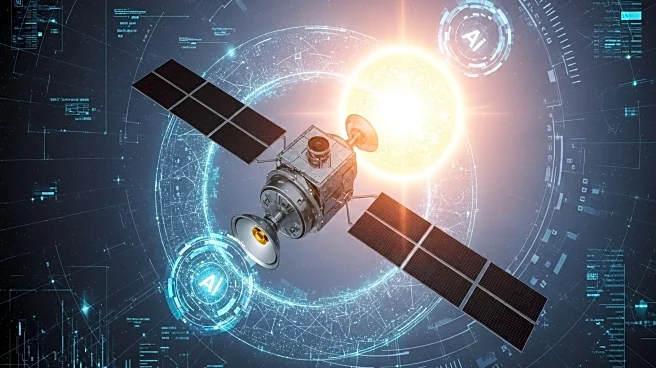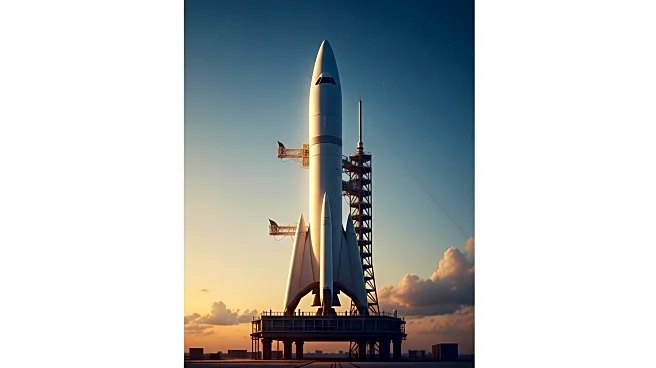What's Happening?
A significant solar wind storm, originating from a butterfly-shaped coronal hole on the Sun, is expected to reach Earth by September 14. This event could trigger geomagnetic storms ranging from G1 (minor) to G2 (moderate) levels, potentially leading to visible auroras at mid- to high-latitudes in the Northern Hemisphere. Regions such as Canada, Alaska, Scandinavia, and northern parts of the U.K., as well as some areas in the Southern Hemisphere, may witness these auroral displays. The phenomenon is particularly notable during the equinox periods due to the Russell-McPherron effect, which enhances the interaction between Earth's magnetic field and solar wind, increasing the likelihood of geomagnetic disturbances.
Why It's Important?
The potential for auroras due to this solar wind storm highlights the dynamic nature of space weather and its impact on Earth. Geomagnetic storms can affect satellite operations, GPS systems, and power grids, posing challenges for industries reliant on these technologies. The increased auroral activity also offers a unique opportunity for scientific observation and public engagement with natural phenomena. Understanding and predicting such events are crucial for mitigating risks associated with space weather, ensuring the resilience of technological infrastructure, and enhancing public awareness of these cosmic interactions.
What's Next?
Observers in affected regions are advised to monitor updates from space weather agencies like the NOAA Space Weather Prediction Center and the U.K. Met Office. These organizations provide forecasts and real-time data on solar wind conditions and geomagnetic activity. The scientific community will likely continue to study the effects of this solar wind storm to improve predictive models and understand the underlying mechanisms of geomagnetic interactions. Public interest in auroras may also lead to increased engagement with educational resources and community events focused on space weather phenomena.
Beyond the Headlines
The occurrence of auroras during equinox periods underscores the importance of understanding the Earth's magnetic field dynamics and their interaction with solar activity. This knowledge is vital for developing strategies to protect critical infrastructure from space weather impacts. Additionally, the cultural and aesthetic appreciation of auroras can foster a broader interest in astronomy and environmental science, encouraging public support for scientific research and exploration.
